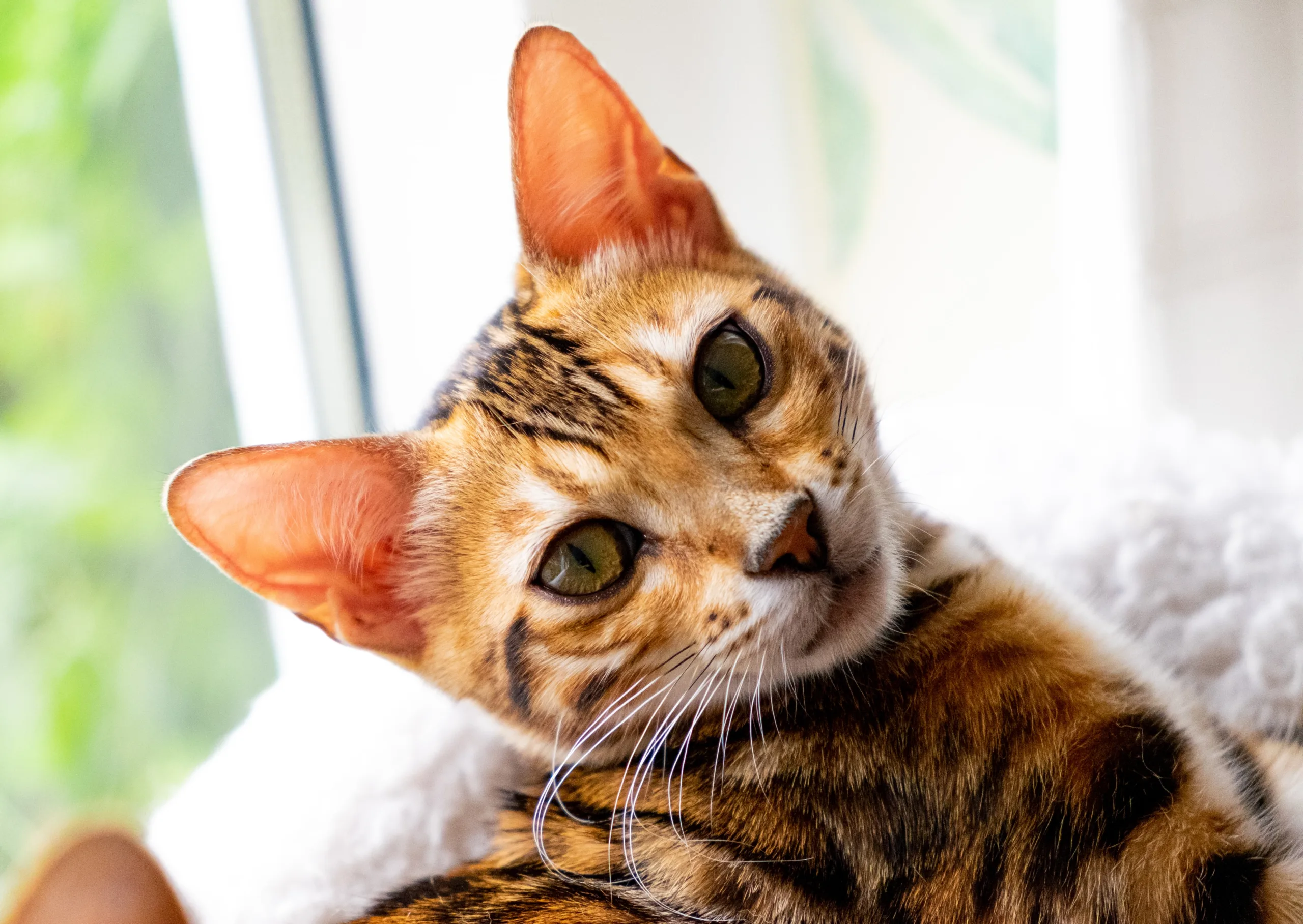Cats are known for their expressive and intricate communication methods, and their ears play a significant role in conveying their feelings and intentions. A cat’s ears are not just cute accessories – they are a window into their emotions and state of mind. Understanding what your cat’s ears mean can help you connect better with your feline friend and provide them with the care they need. In this article, we’ll delve into the world of cat ears and decipher the messages they convey.
For more about cats click here
The Language of Cat Ears: What They Can Tell You
Cats have a remarkable ability to use their ears to communicate a wide range of emotions and intentions. Here’s what your cat’s ears might be saying:
- Ears Forward and Up: When a cat’s ears are facing forward and slightly up, it indicates curiosity and interest. They are likely alert and attentive, possibly focused on something they find intriguing.
- Ears Perked Up: Perked-up ears indicate that a cat is paying attention and evaluating their surroundings. This posture suggests a sense of awareness and readiness for any potential activity.
- Ears Back and Flat: Flat ears are a clear sign of aggression, fear, or stress. When a cat’s ears are pressed backward and close to their head, it’s a warning that they feel threatened and might lash out if provoked.
- Ears Tilted Back: Slightly tilting the ears back can signal that a cat is feeling relaxed and content. This posture often accompanies comfortable interactions and gentle touch.
- Ears to the Side: Cats might angle their ears to the side when they are unsure or feel a mix of curiosity and caution. It’s a non-threatening posture that indicates they are open to interaction but also assessing the situation.
- One Ear Forward, One Ear Back: This combination can occur when a cat is in a playful or mischievous mood. They might use this ear posture during games or while observing their surroundings with a hint of curiosity.
Cat Ears and Mood: Decoding the Messages
- Happy and Relaxed: When a cat is happy and content, their ears are typically in a neutral position, neither too far forward nor too far back. They might tilt their ears slightly to the side as a sign of relaxation.
- Alert and Interested: Cats with their ears forward and up are likely interested in something happening around them. They could be watching birds outside the window or paying attention to a new sound.
- Aggressive or Fearful: Flat ears pressed back against the head are a clear indication that a cat is feeling threatened or agitated. This posture often accompanies hissing or growling.
- Playful: The combination of one ear forward and one ear back can signal playfulness. Cats might adopt this posture during interactive play sessions with toys or other animals.
Cat Ears and Communication with Humans
Understanding your cat’s ear language can enhance your communication and strengthen your bond. Here’s how to interpret and respond to your cat’s ear postures:
- Respect Their Boundaries: If your cat’s ears are flat and they are showing signs of fear or aggression, give them space and avoid approaching them. Allow them to calm down before attempting any interaction.
- Engage Playfully: When you notice one of your cat’s ears forward and the other back, it might be a great time for interactive play. Grab a toy and initiate a fun play session.
- Offer Affection: If your cat’s ears are relaxed and tilted slightly to the side, it’s a sign that they are comfortable and open to affection. Gently petting them in a calm manner can reinforce this positive interaction.
FAQs: Addressing Common Questions
Q1: Why do cats sometimes move their ears independently?
Cats have a remarkable ability to move their ears independently to track sounds and stimuli coming from different directions. This evolutionary trait enhances their hunting skills and situational awareness.
Q2: Should I touch my cat’s ears?
While many cats enjoy gentle ear rubs, some might find it uncomfortable or overstimulating. It’s essential to observe your cat’s reactions and respect their preferences. If they seem uneasy, avoid touching their ears.
Q3: Why do cats flatten their ears when they’re scared?
Flattening their ears is a defensive posture that helps cats protect their ears from potential threats. It also makes them appear smaller and less intimidating to potential aggressors.
Q4: Why do cats rotate their ears towards sounds?
Cats’ keen sense of hearing allows them to locate and identify sounds accurately. Rotating their ears toward a specific sound helps them gather information about their environment and potential sources of interest or danger.
Q5: Can I learn to communicate better with my cat through their ears?
Absolutely! Observing your cat’s ear postures, along with their body language and vocalizations, can give you valuable insights into their feelings and needs. Over time, you’ll become more attuned to their unique ways of communicating.
In conclusion, a cat’s ears are not just adorable appendages; they are powerful communicators that convey a wide range of emotions and intentions. Paying attention to your cat’s ear postures can help you understand their mood and respond appropriately. As you deepen your connection with your feline friend, remember that each cat is an individual with their own communication style, and attentive observation is key to effective communication.
Click here for more
